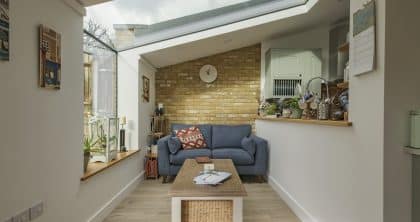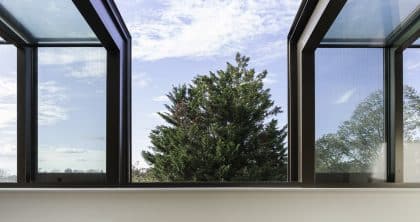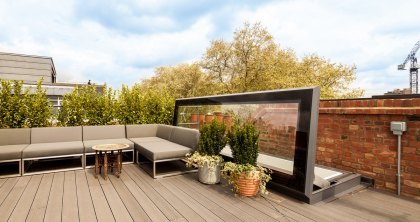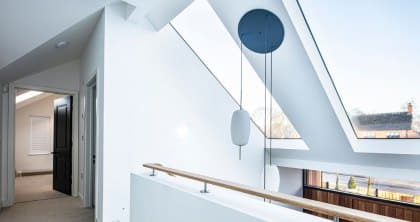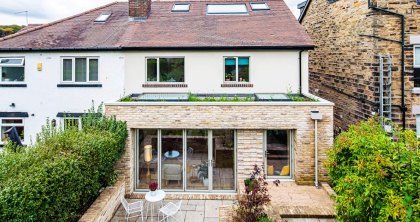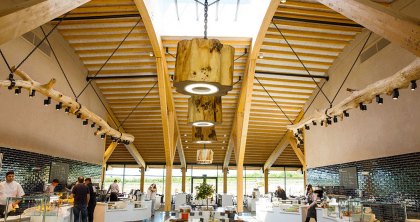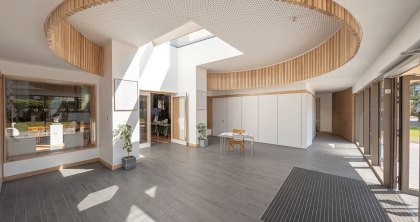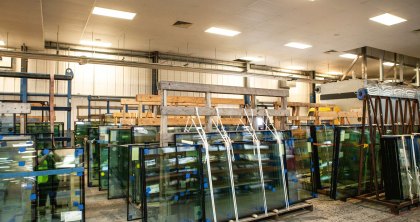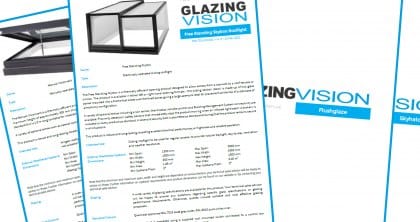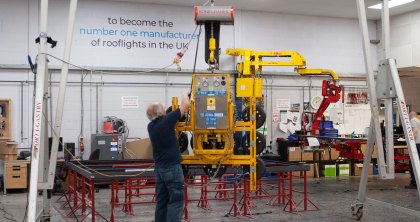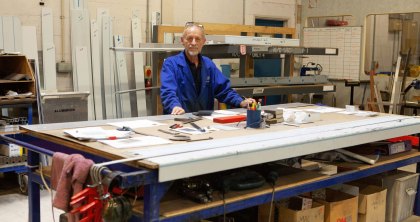Posted on March 15, 2019 in Blog
- Home
- Rooflights
- Roof Windows
- Bespoke Service
- Inspiration
- Resources
- Guide to Extensions
- Approved Document L Whitepaper
- Guide to Specifying Glass in Rooflights
- Specifying Roof Terraces Guide
- Rooflights and Roof Windows Guide
- Inspirational Kitchen Design Ideas
- Thermal Performance Whitepaper
- Approved Document Q Whitepaper
- Approved Document K Whitepaper
- Guide to Improved Daylight & Ventilation
- Approved Document F Whitepaper
- Approved Document O Whitepaper
- Case Studies
- Blog
- ESG
- About us
- Contact us
The development of glass manufacturing technology over the last 60 years has fed ambitious architectural uses of glass; in turn, the increased consumption of glass by the construction industry has fed the development of new products and glass types.
Glass for use in buildings, usually called architectural glass, requires pure materials. It cannot simply be made from recycled domestic waste glass.
The overwhelming majority of glass produced for construction today is float glass; it is the ‘basic’ form of glass from which other options are derived. Traditional manufacturing processes are still used for conservation and heritage projects, but modern glass production has removed the distortion issues commonly associated with older glass types.
It’s not uncommon for float glass to be described as annealed glass. Annealing is a process; it produces glass free of internal stresses caused by other heat treatments. However, annealed glass breaks easily into large shards. Understandably, that is considered unsafe for certain uses in buildings, and there are other ways in which float glass can be treated to improve its safety.
What is ‘Toughened’ glass?
Toughened glass is designed to fragment into much smaller pieces or granules if broken and is therefore suitable for safety applications.
Annealed glass is heated, then rapidly cooled to make the surface of the glass more resistant to tensile failure. Glass cracks due to failure at the surface. This tempering, balances compression at the surface with tension in the centre of the pane, making toughened glass some four or five times stronger than annealed glass, and more resistant to blunt impact. Toughened glass cannot be cut or worked, so all processing has to be carried out prior to toughening.
What is ‘heat-strengthened’ glass?
Produced in a similar way to toughened glass, heat strengthened glass is subjected to a slower rate of cooling and therefore is only around twice as strong as annealed glass (or half as strong as toughened glass). If it breaks, it exhibits similar behaviour to annealed glass. It cannot be used as safety glass on its own but, thanks to good residual strength after cracking, it does lend itself to use in a laminated pane. Heat strengthened glass does not require heat soaking.
Both toughened glass and heat-strengthened glass are resistant to large and variable changes in temperature, suiting them to spandrel panels where there is a risk of thermal cracking. They also offer good resistance to wind pressure on tall buildings and, in particular, corners.
The heating and cooling cycle required to produce toughened or heat-strengthened glass causes optical distortion in the surface. When annealed glass is heated again, it sags slightly between the rollers carrying the glass through the furnace; the subsequent cooling results in ripples, or ‘roller wave distortion’.
Roller wave mainly shows up in the reflections of the glass, and eliminating such distortion entirely is impossible. It can only be reduced, mainly by design and control of the manufacturing process and the way in which the glass is heated and cooled and moved through that sequence.
Thicker panes of glass generally remain flatter, while larger panes typically show up more distortion.
For more information about the benefits for both toughened and heat-strengthened glass, download our guide to specifying glass in rooflights whitepaper.

